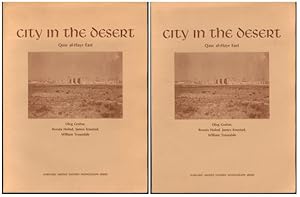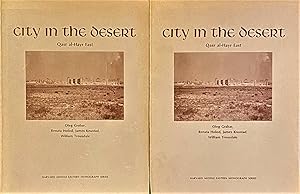Grabar Oleg Renata Holod James (2 results)
Search filters
Product Type
- All Product Types
- Books (2)
- Magazines & Periodicals (No further results match this refinement)
- Comics (No further results match this refinement)
- Sheet Music (No further results match this refinement)
- Art, Prints & Posters (No further results match this refinement)
- Photographs (No further results match this refinement)
- Maps (No further results match this refinement)
- Manuscripts & Paper Collectibles (No further results match this refinement)
Condition
- All Conditions
- New (No further results match this refinement)
- Used (2)
Binding
- All Bindings
- Hardcover (No further results match this refinement)
- Softcover (2)
Collectible Attributes
- First Edition (No further results match this refinement)
- Signed (No further results match this refinement)
- Dust Jacket (No further results match this refinement)
- Seller-Supplied Images (2)
- Not Print on Demand (2)
Free Shipping
- Free Shipping to U.S.A. (No further results match this refinement)
Seller Rating
-
City in the Desert: Qasr Al-Hayr East
Published by Harvard University Press, 1978
Seller: Lavendier Books, Foster, RI, U.S.A.
Paperback. Condition: Good. Harvard University Press; Cambridge, 1978. Softcover. Complete 2 Volume Set. One Volume is Text and Other Volume is maps and plates. A Good, binding firm, some use/handling marks, moderate scattered foxing to text block edges, some foxing/age spotting to front and back matters, some handling/scuff marks to covers, small crease front cover near fore-edge of Text Volume, small soiled spot on spine and abrasion top rear cover of Maps/Plates Volume, a good and unmarked copy in Oversize Wraps. 4to[quarto or approx. 9.5 x 12 inches], Text Volume 215pp., Maps/Plates Volume 296pp., indexed, bibliography, notes, b&w illustrations. We pack securely and ship daily with delivery confirmation on every book. The picture on the listing page is of the actual book for sale. Additional Scan(s) are available for any item, please inquire.Please note: Oversized books/sets MAY require additional postage then what is quoted for 2.2lb book.
-
City in the Desert: Qasr Al-Hayr East. TWO VOLUMES.
Published by Harvard University Press, Cambidge, 1978
Seller: FOLIOS LIMITED, Witney, United Kingdom
Soft cover. Condition: Very Good. Text Volume: ix, [2], 215 pp., appendix, tables, notes, biblio, index / Plates Volume: vii, 296 pp., numerous b/w illustrations, indexed, from Harvard Middle Eastern Monograph Series, publisher's original wrappers, small light stain to lower spines, otherwise set in mint condition. An account of the excavations carried out at Qasr al-Hayr East on behalf of the Kelsey museum of archaeology at the university of Michigan, with the help of Harvard university and the oriental institute, the university of Chicago. Qasr al-Hayr al-Gharbi is a Syrian desert castle or Qasr located 80 km south-west of Palmyra on the Damascus road. Qasr al-Hayr al-Gharbi is one of a number of Umayyad desert castles in the Syrian/Jordanian region. The site originally consisted of a palace complex, a bath house, industrial buildings for the production of olive oil, an irrigated garden and another building which scholars suggest may have been a caravanserai. Over the entrance is an inscription which declares that it was built by Hisham in the year 727, a claim that is borne out by the architectural style. It was used as an eye of the king during the Umayyad era, to control the movement of the desert tribes and to act as a barrier against marauding tribes, as well as serving a hunting lodge. It is one of the most luxurious examples of a desert palace. Later it was utilized by the Ayyubids and the Mamelukes but was abandoned permanently after the Mongol invasions. The central doorway to the castle is very attractive and has been moved to the National Museum of Damascus to be used as the entrance. Its semi-cylindrical towers on the sides of the doorway, columns, and the geometric shapes mirrored a blend of Persian, Byzantine and Arab architecture. Little of the original castle remains; however, the reservoir to collect water from Harbaka dam, a bath and a khan are still visible. The gateway is preserved as a fašade in the National Museum of Damascus. #30778.



